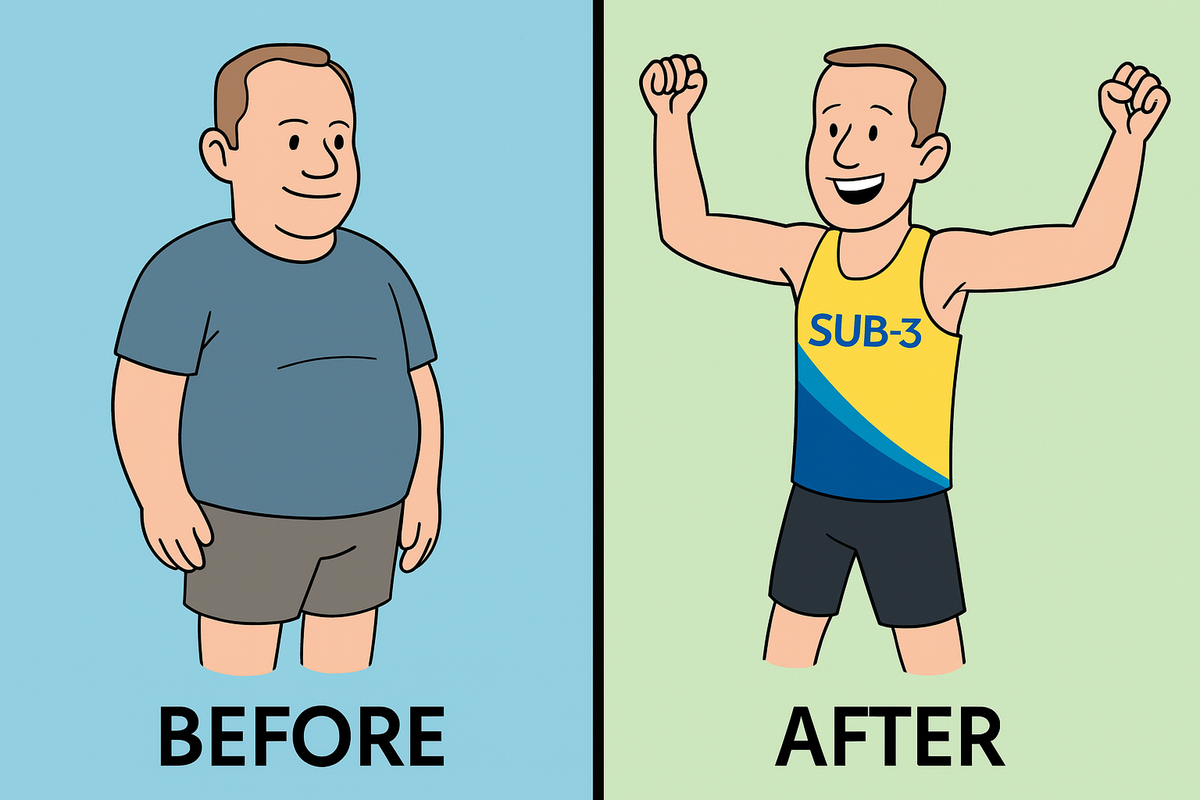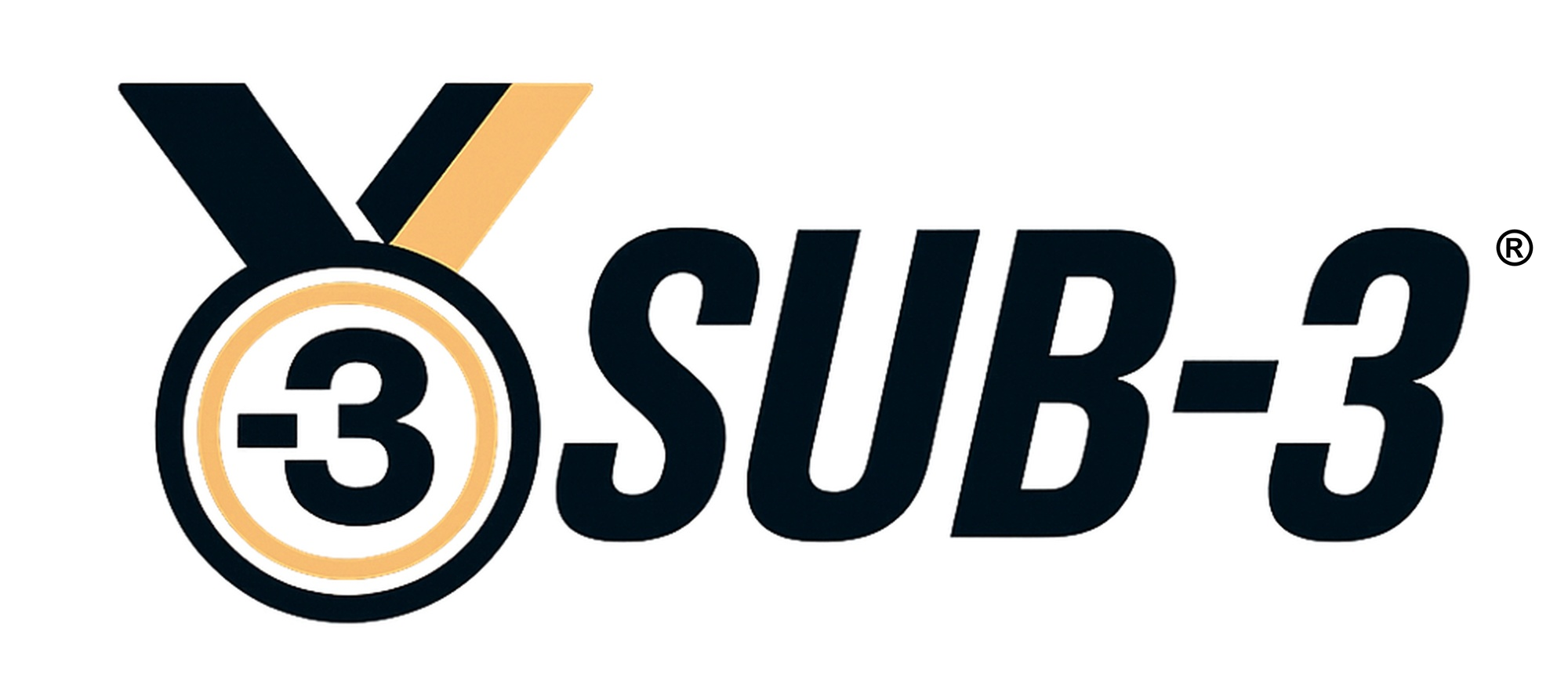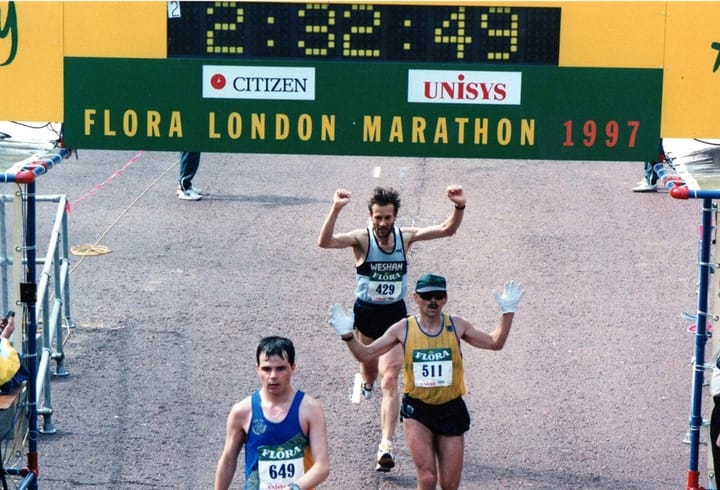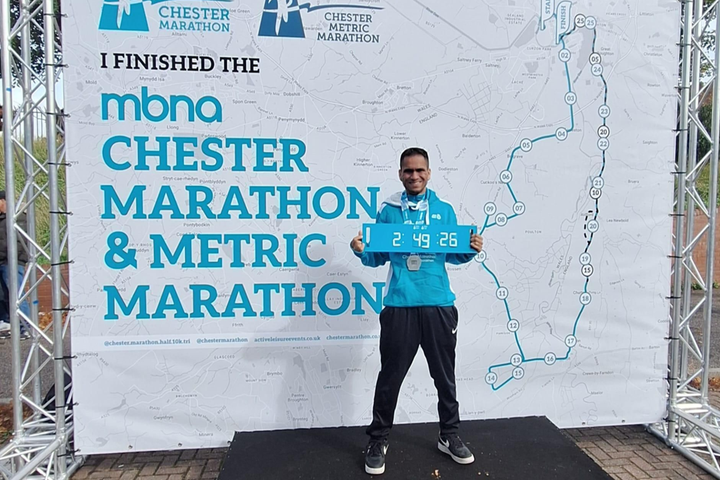What’s the ideal body fat for a sub-3 runner?
Shedding excess body fat won’t help everyone - but for me, it was the gamechanger that took my sub-3 running to the next level. Here’s how I did it, what I learned, and why it’s not for everyone.

About two and a half years ago, I sought professional advice to improve my running. I was running between 100 and 130km a week - track, hills, long runs -the works. My times were solid for my age, but I felt heavier than others lining up at the front of race pens. Still, I was cautious about losing weight in case it cost me hard-earned muscle.
The expert I consulted didn’t think I had much to lose. My home scales were showing a body fat of 11%, so the verdict was to keep training as I was. But despite pushing hard for two years, my times plateaued. If anything, I got slightly heavier.
I began to wonder if I’d peaked in my mid-40s. Maybe I was just built this way -more endomorph than ectomorph - and needed to accept it. But something didn’t sit right. On Strava, I could filter segment leaderboards by weight. I’d often be minutes faster than anyone else in my weight category over 10K. I was outperforming my weight class.
The breakthrough came from something as simple as changing my scales. I switched to Garmin Index S2 - and the number staring back at me was 24%. That couldn’t be right… could it?
To be sure, I booked a full-body DEXA scan. The result: 24% body fat. My old scales had misled me for years. I hadn’t been 11%—I was over double that. I didn’t waste time being angry. Instead, I saw a huge opportunity.
At 89kg, 24% body fat meant I was carrying roughly 21kg of fat - and, based on my age and training, much of that wasn’t functionally necessary. But here’s the hard truth: even running 100 miles a week, I couldn’t shift it. My weight clung on through every marathon build.
I knew it wasn’t wise - or safe - to run a calorie deficit while training that hard. So I waited. After the Valencia Marathon in December, I downshifted my training volume and reinstalled the one app that had worked for me before: Noom, alongside following advice in Fitzgerald's Racing Weight. For three months, I tracked everything. I read the advice. I did the quizzes. I weighed myself every single day.
It was a tough Christmas. I’d gone tee-total, and I was trying to hit a daily deficit of around 500 calories. But for once, my body was cooperating. The fat started coming off. By mid-February, I’d lost 10kg. I weighed 79kg - my lightest adult weight.
I celebrated my 45th birthday by winning the Love Welwyn 10K, leading from the front and clocking a PB of 35:06 - over 30 seconds ahead of the field and scoring a massive PB. I’d done fewer sessions than usual that winter. Less mileage. But the weight loss made all the difference. In the following months, I set PBs at every distance from 5K to the marathon. And not by seconds—by minutes (including 1m10s off my 5K PB).
This won’t be the right approach for everyone. As one club-mate put it, “It’s a one-time trick”. But it’s a lever - an often-overlooked one - that transformed my performance.
Some running coaches are wary of raising this topic, concerned it could be misinterpreted or lead to unhealthy behaviours - especially in younger athletes. Others say it’s simply hard to get clients to commit, so they tend to focus on other areas instead.
But if you’re an adult, fully informed, and curious about whether this could help you - it might be worth exploring.
If You’re Considering A Body Fat Reduction Phase
- Consult a qualified professional first – ideally a sports dietitian or doctor with experience in endurance athletes. Especially if you’ve had issues with eating, body image, or energy levels in the past.
- Weigh yourself daily – not just in kg, but using reliable body fat metrics. Get a DEXA scan if possible to calibrate your scales (don’t rely on them blindly, like I did).
- Don’t do this in peak training – running a calorie deficit while training for a marathon can compromise performance, immunity, and long-term health. Use an “off-season” phase when intensity is lower.
- Keep protein intake high – aim for ~2g per kg of lean mass. This helps preserve muscle and aids satiety (i.e. helps ensure you feel full).
- Track your food, not just your weight – focus on quality (nutrients, fibre, hydration) as well as quantity. Fat loss should never come at the expense of basic nutrition.
- Expect to feel hungry – this isn’t a lifestyle. It’s a short-term phase. You may feel cold, low on energy, or even moody. Be alert to signs that it’s gone too far.
- Fuel your workouts – even when in a deficit, always eat before hard runs and long sessions. Use gels or drinks during as needed. Don’t compromise your training.
- Stabilising is just as hard – post-loss, your body will try to rebound. Stay consistent with habits, and consider keeping light tracking in place for a while.
- Don’t expect applause – people will notice, and not always positively. Some may think you’re being obsessive. That’s their issue. But it’s worth preparing for.
Healthy Body Fat Guidelines (DEXA or Comparable Measures)
| Age Range | Male (%) | Female (%) |
|---|---|---|
| 20–39 | 8–20 | 21–33 |
| 40–59 | 11–22 | 23–34 |
| 60+ | 13–25 | 24–36 |
Sources: American Council on Exercise, WHO, NIH. Endurance athletes often aim for the lower end of the range, but dipping too low can be harmful.
Tools That Helped Me
- Noom: Not built for elite runners, but effective for behaviour change. Avoid syncing steps or runs, or it will inflate your calorie allowance.
- Racing Weight by Matt Fitzgerald: The definitive book on this topic. Fitzgerald explores how body composition - not just weight - affects performance, offering structured plans for endurance athletes who want to optimise lean mass.
- Garmin Index S2: Gives an excellent approximation of body fat from your bathroom floor, enabling daily readings, and send results direct to your phone via Garmin Connect.
Want To See What’s Possible?
There are plenty of online calculators that estimate performance gains from weight loss. The one I used was:
RunBundle Weight vs Pace Calculator
(Note: Use as a rough guide, not gospel. But in my case, it was uncannily accurate.)
Final Word
This isn’t about aesthetics. It’s not about looking leaner. It’s about performance - and in my case, unlocking potential that had been hiding in plain sight. If you’re already lean, it may not apply. But if you’re carrying more body fat than you realised - and you’ve tried everything else - it might just be worth exploring this path.
Just go carefully, and track everything. And, as with every sub-3 tool in the box, use it wisely.
Enjoyed this article? Help keep Sub-3 running — support us with a coffee.
To help fund the running of the site, Sub-3 is an Amazon Associate and earns from qualifying purchases. We only recommend gear or kit that has genuinely helped in our own running and that we believe is worth considering.



